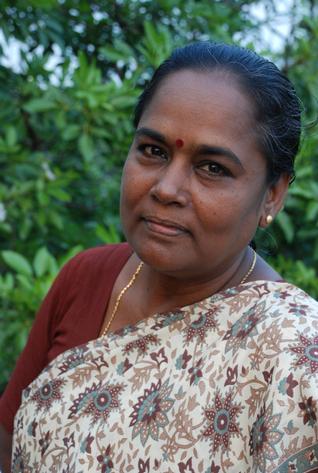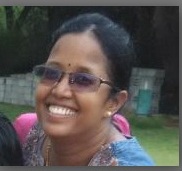by Ben Antao
THE WEAVE of My Life by Urmila Pawar is more than a Dalit woman’s memoirs; it’s a bold yet intelligent critique of casteism coupled with feminist politics in Maharashtra towards the last quarter of the 20th century. And to think that a woman from the Mahar caste could rise above her poor and deprived environment in the Ratnagiri village and survive to tell her story is nothing short of remarkable.
And so it is the weave of Pawar’s life that enthrals the reader through its many diversionary patterns, fascinating in complexity and creativity, like the basket her mother used to weave with bamboo strips. Indeed, her autobiography was first published in Marathi in 2003 as Aaydan, referring to her mother’s work of weaving baskets.
And the English translation published in 2008 is given the title The Weave of My Life, a Dalit Woman’s Memoirs, by the author to dramatise the significance of weaving as a metaphor for writing, a charming metaphor, indeed, for the act of writing an autobiography.
Pawar, now 63, and a well-known Marathi litterateur, writes with such honesty and truth that her narrative reads like good fiction, a shapely story that feels too good to be true. And yet I trust her voice!
Two aspects of her life kept me absorbed in her story – Ratnagiri and Siddharth College in Mumbai. As one born and raised in Portuguese Goa, I could relate to her description of foods such as ambeel for many households in the Salcete district also prepared this sour-tasting congee in the 40s. However, the basket-weaving Mahars in my village of Velim lived not in the centre of the village as in Ratnagiri, but at its edge at the foot of the hill. Secondly, I too graduated from the Siddharth College, founded and run by an educational trust in honour of Dr. Babasaheb Ambedkar.
Pawar brings to life actions of caste discrimination through her lived experiences in Ratnagiri as well as in Bombay, renamed Mumbai in 1994, even after her conversion to Buddhism and the untouchables became Dalits. There was a Muslim family in Ratnagiri who stayed in Pawar’s house and wanted to take a dish of biryani to their relatives in the Muslim locality. Two Muslim girls asked Urmila to accompany them, to which she readily agreed. But upon reaching the relative’s house, one of the girls introduced Urmila at the door as “This is our landlady’s daughter.”
A plump woman in a brocaded sari and decked up in heavy gold jewellery frowned and said, “Didn’t you find any other place? Why did you go and stay at that Mahar’s house?” The woman told Urmila to sit on a bench outside, while she asked the two girls to follow her inside.
“There was hardly any conversation between us on the way back,” writes Urmila. “They did not speak to me; they also walked at a distance from me. Since I had carried the bag with the biryani container on our way to the house, I offered to carry it on the way back as well”.
“Who knows what the fat woman in Rajiwada had told them about me but somehow they stopped talking to me from that day on. They began to behave like strangers. Before this happened I would return eagerly from school to chat with them. Now I began to feel guilty as if I had committed a grave offence. At the time of going back to Mumbai at the end of their holidays, they just said ‘Bye’ and left. How this hurt me! I wept bitterly.”
Even after moving to Mumbai and heading the call of Dr. Babasaheb Ambedkar to “leave the villages and go to the cities,” Pawar found her own community of Dalits, now better educated and better employed to be considered middle class, practicing subtle prejudice through name changes and looking down upon their poorer cousins.
During this period Pawar, holding a fulltime job in a government department, was gradually becoming known as a writer. She used this prestige as a writer of fiction to volunteer as a speaker in the cause of women’s liberation in general and the emancipation of Dalit women in particular. Her commitment and courage to help her community can be judged from the following description of a slum area where she’d gone to raise women’s awareness.
“Participating in public programs like Ambedkar Jayanti and Mahaparinirvan Din in the slums, however, made me see the poverty and suffering of our people at close quarters. A few of our relatives lived in slums, so I knew what life in the slums was like. But those slums were not like the ones I went to! Life here was impossible! Tiny, eight feet by six feet huts, crammed back-to-back in a very small space… cane partitions in between… low tin roofs with a couple of old rags and a few pots and pans by way of possessions… stinking open drains and gutters in front, with clouds of flies and mosquitoes hovering over them… attacking humans for trespassing on their land… mice and bandicoots chasing each other all over the place… children defecating and pigs roaming on the dung heaps nearby… people spitting everywhere… women throwing dirty water anywhere… bitter quarrels going on… and even in this atmosphere, people with pale, emaciated faces trying to strengthen each other’s resolve to live in the hope of a better life!”
Pawar narrates the story of a sales tax officer, a male colleague of hers and one of the many such educated Dalits, who took her to task on the issue of women’s liberation. “How do our women suffer?” he’d ask. “Are they being burnt or killed? Well, in a married life, a couple of slaps here and there is nothing… But women’s liberation! What for? Because one receives a few slaps?”
As I read this autobiography I couldn’t help wondering how literary, interesting and entertaining Pawar’s use of the Marathi language must have been.
Her translator Maya Pandit says this about Aaydan: “Urmila Pawar’s memoir represents the struggle of a Dalit woman who has travelled on a long journey from a small town to a huge metropolis, and became one of its leading intellectuals and writers. She has tried to make values like justice, equality, freedom, rationality, citizenship, progress, and democracy an integral part of her Dalit feminist utopia.”
And for me, reading this English translation by Maya Pandit, Pro-Vice Chancellor of the EFL University, Hyderabad, has been an extraordinary experience.
Ben Antao, 73, born and raised in Velim and Margao, Goa, lives in Toronto, Canada. He’s a journalist and author of four novels and several short stories. His memoir ‘Images of the USA’ was published in January, 2009. His email: ben.antao@rogers.com
Courtesy: Goan Observer, Feb, 27/09









